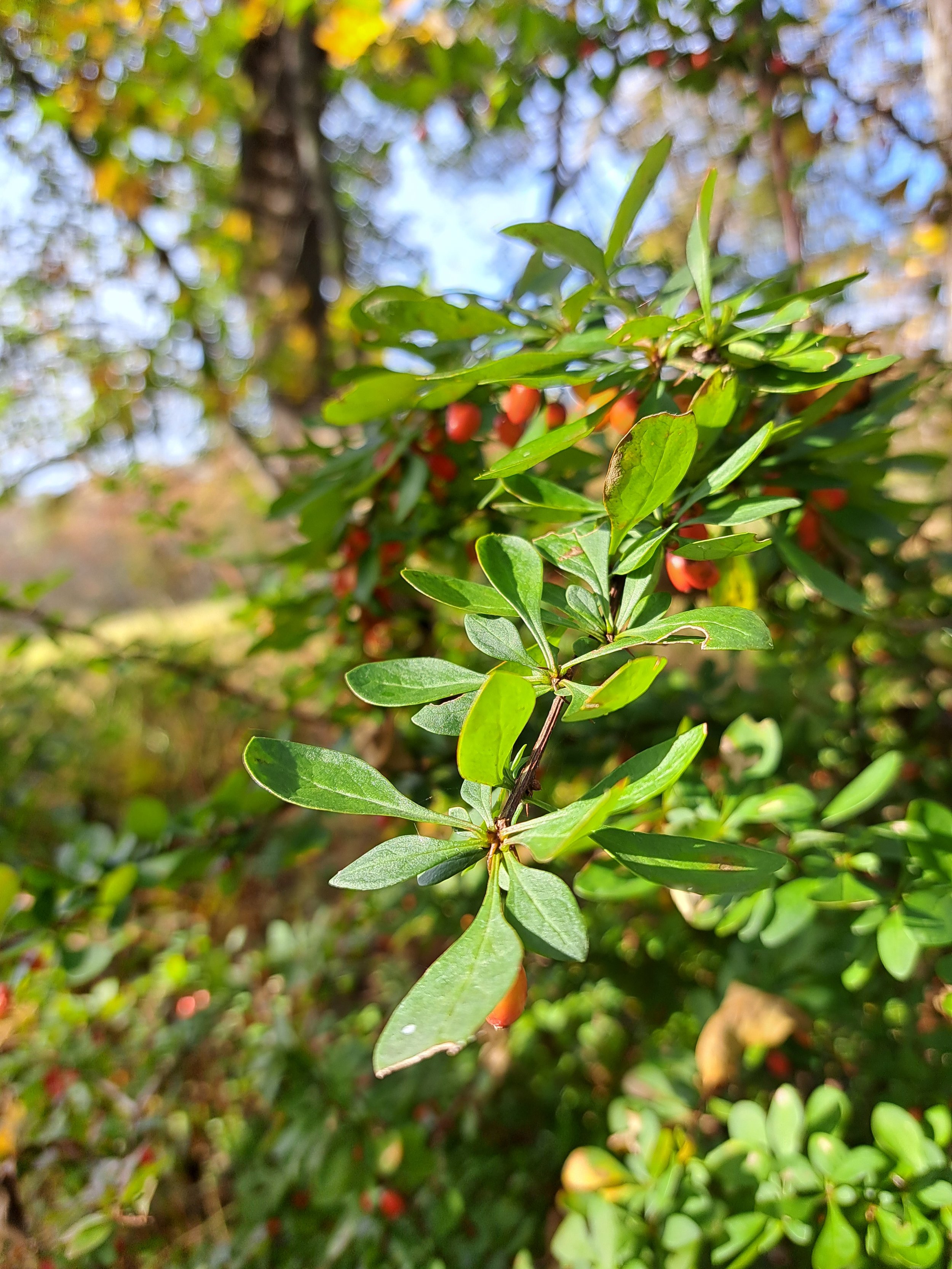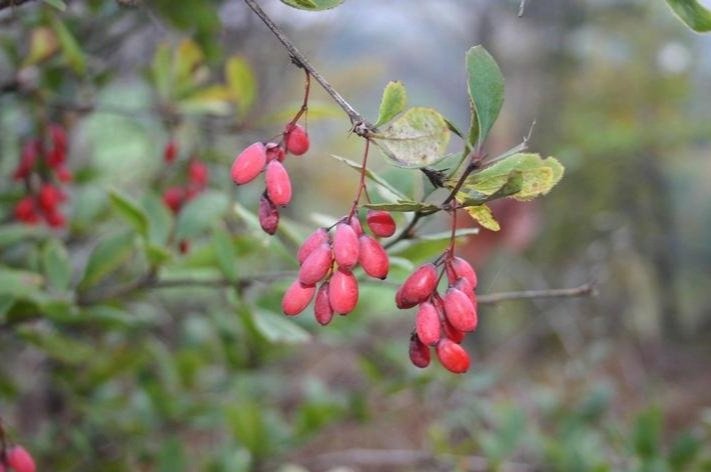
Invasive Species | Terrestrial Plants
Japanese Barberry
Chris Evans, University of Illinois, Bugwood.org
Japanese Barberry
(Berberis thunbergii)
French common name: Épine-vinette du Japon
Japanese Barberry is a common ornamental garden plant that can escape into nearby natural areas where it overtakes the understory, pushing out native species and reducing wildlife habitat. It can quickly spread through the expansion of its rooting system (rhizomes), broken or cut stems creating new sprouts, and seed dispersal by birds.
Characteristics
Size/ Structure: A small-to-medium, densely branched perennial shrub with thorn-covered stems, typically 1 – 2m tall and 0.3- 1.5m+ in width. Often one of the first plants to leaf out in spring.
Leaves: Small, smooth-edged, and shaped like a water droplet; clustering in tight bunches close to the branch. They exhibit a range of colors (red, purple, or green) with a dominant dark green shade in the wild.
Flowers: Tiny, pale yellow flowers with 6 petals; hang singularly or in groups of 2-4 beneath leaf clusters along underside of stems in early-to-mind spring.
Berries/Seeds: Bright red berries that hang singularly along the underside of the stems; mature in mid-summer and remain through the winter.
Richard Gardner, Bugwood.org
Leslie J. Mehrhoff, University of Connecticut, Bugwood.org
Key ID Features
Richard Gardner, Bugwood.org
Small, water droplet-shaped leaves arranged in clusters along stem
Chris Evans, University of Illinois, Bugwood.org
Brown to reddish stems with thorns at each node
Chris Evans, University of Illinois, Bugwood.org
Small, bright red, egg-shaped berries that hang below stem; persist into winter
Common Look-a-Likes
American Barberry (Berberis canadensis)
Looks like Japanese Barberry, but leaf edges are coarsely toothed (fewer than 10 teeth per leaf), the stems have thorns in groups of three, and berries can hang clusters.
Leslie J. Mehrhoff, University of Connecticut, Bugwood.org
Common Barberry (Berberis vulgaris)
Leslie J. Mehrhoff, University of Connecticut, Bugwood.org
Burning Bush (Euonymus alatus)
Invasive
Leaves are arranged oppositely along stems and leaf edge is finely serrated.
Invasive
Looks like Japanese Barberry, but leaf edges are finely toothed (20-30 teeth per leaf), the stems have thorns in groups of three, and berries can hang clusters.









